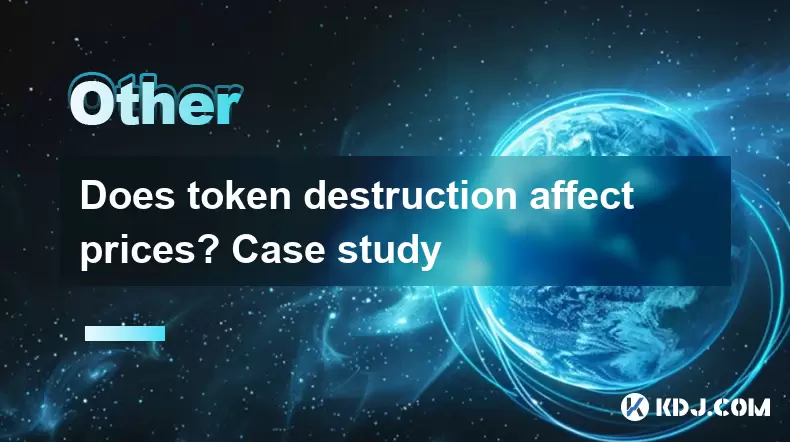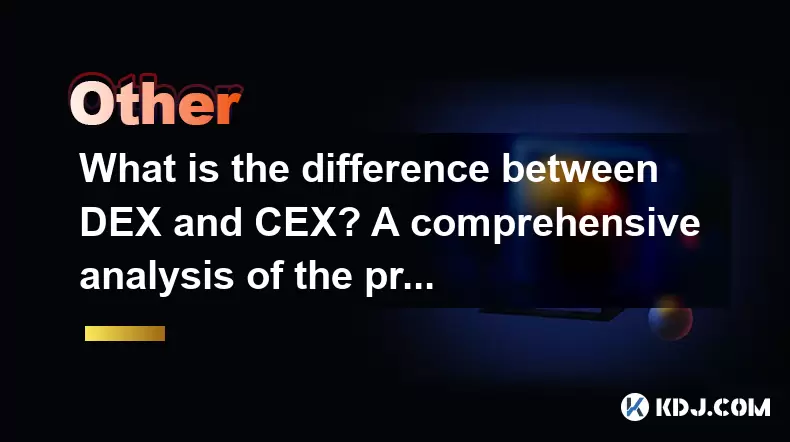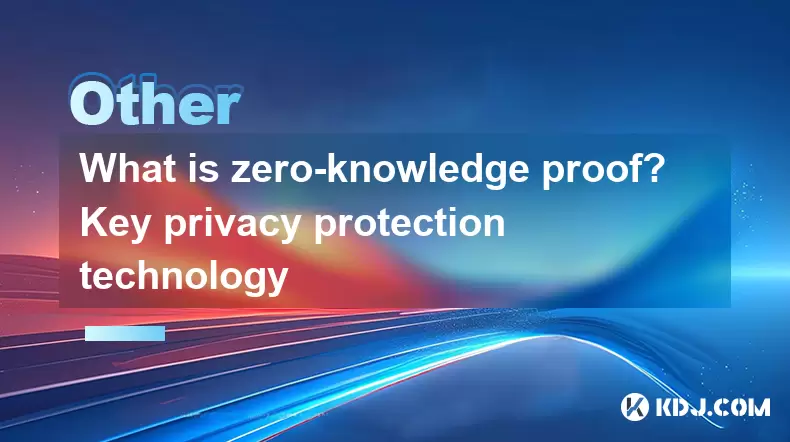-
 Bitcoin
Bitcoin $108,017.2353
-0.81% -
 Ethereum
Ethereum $2,512.4118
-1.58% -
 Tether USDt
Tether USDt $1.0002
-0.03% -
 XRP
XRP $2.2174
-1.03% -
 BNB
BNB $654.8304
-0.79% -
 Solana
Solana $147.9384
-1.76% -
 USDC
USDC $1.0000
-0.01% -
 TRON
TRON $0.2841
-0.76% -
 Dogecoin
Dogecoin $0.1636
-2.09% -
 Cardano
Cardano $0.5726
-1.72% -
 Hyperliquid
Hyperliquid $39.1934
1.09% -
 Sui
Sui $2.9091
-0.59% -
 Bitcoin Cash
Bitcoin Cash $482.1305
0.00% -
 Chainlink
Chainlink $13.1729
-1.54% -
 UNUS SED LEO
UNUS SED LEO $9.0243
-0.18% -
 Avalanche
Avalanche $17.8018
-1.90% -
 Stellar
Stellar $0.2363
-1.69% -
 Toncoin
Toncoin $2.7388
-3.03% -
 Shiba Inu
Shiba Inu $0.0...01141
-1.71% -
 Litecoin
Litecoin $86.3646
-1.98% -
 Hedera
Hedera $0.1546
-0.80% -
 Monero
Monero $311.8554
-1.96% -
 Dai
Dai $1.0000
-0.01% -
 Polkadot
Polkadot $3.3473
-2.69% -
 Ethena USDe
Ethena USDe $1.0001
-0.01% -
 Bitget Token
Bitget Token $4.3982
-1.56% -
 Uniswap
Uniswap $6.9541
-5.35% -
 Aave
Aave $271.7716
0.96% -
 Pepe
Pepe $0.0...09662
-1.44% -
 Pi
Pi $0.4609
-4.93%
What is a light node of blockchain? What is the difference with a full node?
Light nodes enable blockchain interaction on resource-limited devices by relying on full nodes for data, enhancing accessibility but with reduced security and privacy.
Apr 28, 2025 at 07:50 am

A light node, also known as a light client, is a type of node in a blockchain network that does not store the entire blockchain. Instead, it relies on full nodes to provide the necessary data to validate transactions and maintain a basic level of network interaction. Light nodes are designed to be resource-efficient, making them suitable for devices with limited storage and processing capabilities, such as smartphones and lightweight computers.
The primary function of a light node is to enable users to interact with the blockchain without the need to download and store the entire blockchain. This is particularly useful for users who want to perform basic operations like sending and receiving cryptocurrency, checking balances, or verifying transactions without the overhead of running a full node.
In contrast, a full node stores the entire blockchain and validates all transactions and blocks independently. Full nodes are crucial for the security and decentralization of the blockchain, as they enforce the rules of the network and maintain a complete record of all transactions. However, running a full node requires significant resources, including substantial storage space and processing power.
The key differences between a light node and a full node lie in their data storage, validation capabilities, and resource requirements. Light nodes store only the block headers and rely on full nodes for additional data, while full nodes store the entire blockchain and can validate transactions independently. Light nodes are less resource-intensive, making them more accessible to a wider range of users, whereas full nodes require more robust hardware and are typically run by dedicated participants in the network.
How Light Nodes Work
Light nodes operate by downloading and storing only the block headers of the blockchain. Block headers contain essential information about each block, including the block number, timestamp, and a reference to the previous block (hash). By storing block headers, light nodes can maintain a basic understanding of the blockchain's structure without the need for the entire dataset.
When a light node needs to validate a transaction or check a balance, it sends a request to a full node. The full node then provides the necessary data, such as the Merkle proof, which the light node uses to verify the transaction's inclusion in a block. This process allows light nodes to interact with the blockchain efficiently without compromising the security of the network.
Advantages of Light Nodes
Light nodes offer several advantages that make them an attractive option for many users. One significant advantage is their low resource requirement. Since light nodes do not store the entire blockchain, they can run on devices with limited storage and processing power, such as smartphones and lightweight computers. This makes blockchain technology more accessible to a broader audience.
Another advantage is the speed and efficiency of light nodes. Because they do not need to download and process the entire blockchain, light nodes can start operating much faster than full nodes. This is particularly beneficial for users who need quick access to blockchain services without waiting for a lengthy synchronization process.
Additionally, light nodes contribute to the decentralization of the network by allowing more users to participate without the burden of running a full node. While they rely on full nodes for certain data, the increased number of light nodes can enhance the overall resilience and accessibility of the blockchain.
Disadvantages of Light Nodes
Despite their advantages, light nodes also have some limitations. One major disadvantage is their dependence on full nodes. Since light nodes do not store the entire blockchain, they must trust full nodes to provide accurate and up-to-date information. This reliance can potentially introduce vulnerabilities if the full nodes they connect to are malicious or outdated.
Another disadvantage is the reduced level of security and privacy. Because light nodes do not independently validate the entire blockchain, they may be more susceptible to certain types of attacks, such as those that manipulate the data provided by full nodes. Additionally, light nodes may leak more information about their transactions to the full nodes they connect to, potentially compromising user privacy.
Use Cases for Light Nodes
Light nodes are particularly useful in various scenarios where resource efficiency and accessibility are crucial. One common use case is mobile wallets. Many cryptocurrency mobile applications use light nodes to allow users to manage their funds on the go without the need for extensive hardware resources. This enables users to send and receive cryptocurrencies conveniently from their smartphones.
Another use case is for applications that require quick access to blockchain data but do not need to validate the entire blockchain. For example, decentralized applications (dApps) that need to check transaction statuses or verify balances can use light nodes to interact with the blockchain efficiently.
Additionally, light nodes are beneficial for users in regions with limited internet connectivity or hardware capabilities. By requiring less data to be downloaded and processed, light nodes can function effectively even in environments with constrained resources, thus broadening the reach of blockchain technology.
Differences in Validation and Security
The validation process and security implications differ significantly between light nodes and full nodes. Full nodes validate transactions and blocks by independently checking the entire blockchain against the network's consensus rules. This comprehensive validation ensures that the blockchain remains secure and that all transactions are legitimate.
In contrast, light nodes rely on full nodes for validation. They use the data provided by full nodes, such as Merkle proofs, to verify transactions without downloading the entire blockchain. While this method allows for efficient operation, it also means that light nodes are more dependent on the integrity and reliability of the full nodes they connect to.
From a security perspective, full nodes offer a higher level of security because they can detect and reject invalid transactions or blocks without external assistance. They contribute to the overall security of the network by maintaining a complete and independently verified copy of the blockchain.
Light nodes, on the other hand, have a lower level of security due to their reliance on full nodes. They are more vulnerable to attacks that target the data provided by full nodes, such as false information or outdated data. However, light nodes still maintain a level of security through their ability to verify transaction inclusion in blocks using Merkle proofs.
Resource Requirements and Setup
The resource requirements for running a light node versus a full node are markedly different. Light nodes require minimal storage and processing power, making them suitable for a wide range of devices. To set up a light node, users typically follow these steps:
- Download a light client software specific to the blockchain they want to interact with. Many popular blockchains, such as Bitcoin and Ethereum, have light client implementations available.
- Install the software on the desired device, following the installation instructions provided by the software developer.
- Configure the light client to connect to one or more full nodes. This can usually be done through the client's settings or configuration file.
- Start the light client and begin interacting with the blockchain. The client will download the necessary block headers and connect to full nodes as needed.
Full nodes, on the other hand, require significantly more resources. To set up a full node, users typically follow these steps:
- Download the full node software for the specific blockchain. This software is often provided by the blockchain's development team or community.
- Ensure the device has sufficient storage to accommodate the entire blockchain. This can range from tens to hundreds of gigabytes, depending on the blockchain.
- Install the software on the device, following the installation instructions provided by the software developer.
- Configure the full node to connect to the blockchain network. This may involve setting up network ports, configuring firewall rules, and specifying peers to connect to.
- Start the full node and allow it to synchronize with the blockchain. This process can take several hours or even days, depending on the blockchain's size and the device's performance.
- Once synchronized, the full node can begin validating transactions and blocks independently.
Frequently Asked Questions
Q: Can light nodes be used to mine cryptocurrencies?
A: No, light nodes cannot be used to mine cryptocurrencies. Mining requires the full validation of transactions and blocks, which light nodes are not capable of performing due to their limited data storage and processing capabilities. Only full nodes can participate in the mining process.
Q: Are there any blockchains that do not support light nodes?
A: While most major blockchains, such as Bitcoin and Ethereum, support light nodes, some smaller or less popular blockchains may not have developed light client implementations. It is always important to check the specific blockchain's documentation to see if light nodes are supported.
Q: How do light nodes impact the overall security of a blockchain network?
A: Light nodes can impact the security of a blockchain network in several ways. On one hand, they increase the number of participants in the network, which can enhance decentralization and resilience. On the other hand, their reliance on full nodes for data can introduce potential vulnerabilities if those full nodes are compromised. Overall, light nodes contribute to the accessibility of the network but rely on the security provided by full nodes.
Q: Can a user switch between using a light node and a full node?
A: Yes, a user can switch between using a light node and a full node, provided they have the necessary hardware and software. To switch from a light node to a full node, a user would need to download and install the full node software, ensure they have sufficient storage and processing power, and allow the full node to synchronize with the blockchain. Conversely, to switch from a full node to a light node, a user would simply need to install the light client software and begin using it.
Disclaimer:info@kdj.com
The information provided is not trading advice. kdj.com does not assume any responsibility for any investments made based on the information provided in this article. Cryptocurrencies are highly volatile and it is highly recommended that you invest with caution after thorough research!
If you believe that the content used on this website infringes your copyright, please contact us immediately (info@kdj.com) and we will delete it promptly.
- Royal Mint Coins: Unearthing the Rarest Queen Elizabeth II Treasures
- 2025-07-06 00:30:12
- Arctic Pablo Price Hike: Is Housecoin Feeling the Chill?
- 2025-07-06 00:30:12
- Bitcoin, Kiyosaki, and Acquisition: A Perfect Storm?
- 2025-07-05 22:35:14
- Cardano vs. Solana: The $500 Dream and a Payments Disruptor
- 2025-07-05 22:50:13
- Subway Surfers on PC: Level Up Your Experience, No Train Ticket Needed!
- 2025-07-05 22:35:14
- Ray Dalio, Bitcoin, and Disruptions: Navigating the Future of Finance
- 2025-07-05 23:10:13
Related knowledge

What is an oracle in blockchain? Detailed explanation of its role
Jun 21,2025 at 06:14am
Understanding the Concept of an Oracle in BlockchainIn the realm of blockchain technology, an oracle is a trusted third-party service that connects smart contracts with real-world data. Smart contracts are self-executing agreements where the terms are written directly into code and run on a blockchain network. However, these contracts operate in a close...

Does token destruction affect prices? Case study
Jun 22,2025 at 02:50am
Understanding Token DestructionToken destruction, commonly referred to as token burning, is a process where a portion of cryptocurrency tokens is permanently removed from circulation. This is typically done by sending the tokens to a non-recoverable wallet address, effectively reducing the total supply. Projects may implement token burns to create scarc...

What is a blockchain node? Popular science on the operating principle
Jun 22,2025 at 11:00pm
Understanding the Basics of a Blockchain NodeA blockchain node is essentially a computer connected to a blockchain network that participates in validating and storing transaction data. Each node plays a critical role in maintaining the integrity, transparency, and decentralization of the blockchain. Unlike traditional centralized systems where a single ...

What is the difference between DEX and CEX? A comprehensive analysis of the pros and cons
Jun 24,2025 at 09:42am
What is a DEX (Decentralized Exchange)?A DEX, or Decentralized Exchange, operates without a central authority. Unlike traditional platforms, DEXs allow users to trade cryptocurrencies directly from their wallets. These exchanges rely on smart contracts to facilitate transactions, ensuring that no intermediary holds user funds. One of the most notable fe...

What is zero-knowledge proof? Key privacy protection technology
Jun 22,2025 at 07:29pm
Understanding Zero-Knowledge ProofZero-knowledge proof (ZKP) is a cryptographic method that allows one party to prove to another party that they know a value or information without revealing the actual content of that information. This concept is particularly important in the realm of privacy protection technologies, especially within blockchain and cry...

What can a blockchain browser check? A practical function guide
Jun 20,2025 at 07:35pm
Understanding the Role of a Blockchain BrowserA blockchain browser serves as a powerful tool for anyone interacting with blockchain networks. It allows users to explore, verify, and analyze data stored on the blockchain in real time. Unlike traditional ledgers or databases that are centralized, blockchains are decentralized and publicly accessible. This...

What is an oracle in blockchain? Detailed explanation of its role
Jun 21,2025 at 06:14am
Understanding the Concept of an Oracle in BlockchainIn the realm of blockchain technology, an oracle is a trusted third-party service that connects smart contracts with real-world data. Smart contracts are self-executing agreements where the terms are written directly into code and run on a blockchain network. However, these contracts operate in a close...

Does token destruction affect prices? Case study
Jun 22,2025 at 02:50am
Understanding Token DestructionToken destruction, commonly referred to as token burning, is a process where a portion of cryptocurrency tokens is permanently removed from circulation. This is typically done by sending the tokens to a non-recoverable wallet address, effectively reducing the total supply. Projects may implement token burns to create scarc...

What is a blockchain node? Popular science on the operating principle
Jun 22,2025 at 11:00pm
Understanding the Basics of a Blockchain NodeA blockchain node is essentially a computer connected to a blockchain network that participates in validating and storing transaction data. Each node plays a critical role in maintaining the integrity, transparency, and decentralization of the blockchain. Unlike traditional centralized systems where a single ...

What is the difference between DEX and CEX? A comprehensive analysis of the pros and cons
Jun 24,2025 at 09:42am
What is a DEX (Decentralized Exchange)?A DEX, or Decentralized Exchange, operates without a central authority. Unlike traditional platforms, DEXs allow users to trade cryptocurrencies directly from their wallets. These exchanges rely on smart contracts to facilitate transactions, ensuring that no intermediary holds user funds. One of the most notable fe...

What is zero-knowledge proof? Key privacy protection technology
Jun 22,2025 at 07:29pm
Understanding Zero-Knowledge ProofZero-knowledge proof (ZKP) is a cryptographic method that allows one party to prove to another party that they know a value or information without revealing the actual content of that information. This concept is particularly important in the realm of privacy protection technologies, especially within blockchain and cry...

What can a blockchain browser check? A practical function guide
Jun 20,2025 at 07:35pm
Understanding the Role of a Blockchain BrowserA blockchain browser serves as a powerful tool for anyone interacting with blockchain networks. It allows users to explore, verify, and analyze data stored on the blockchain in real time. Unlike traditional ledgers or databases that are centralized, blockchains are decentralized and publicly accessible. This...
See all articles

























































































